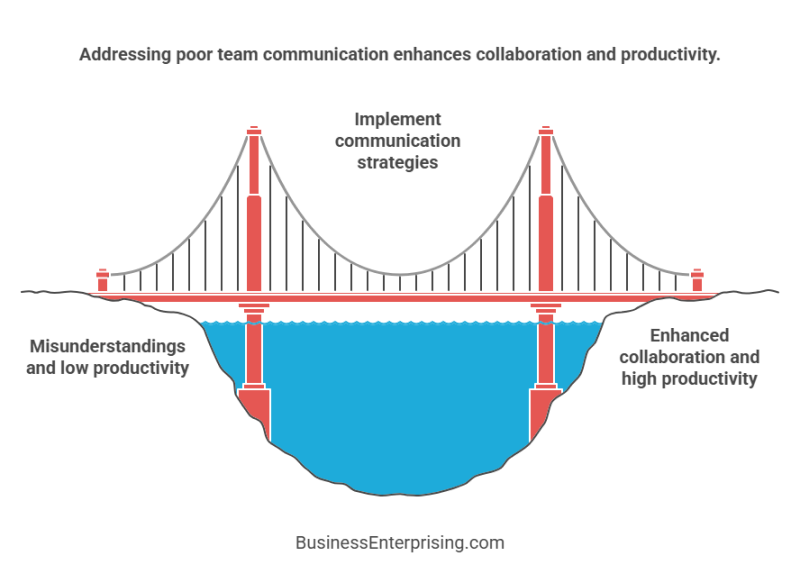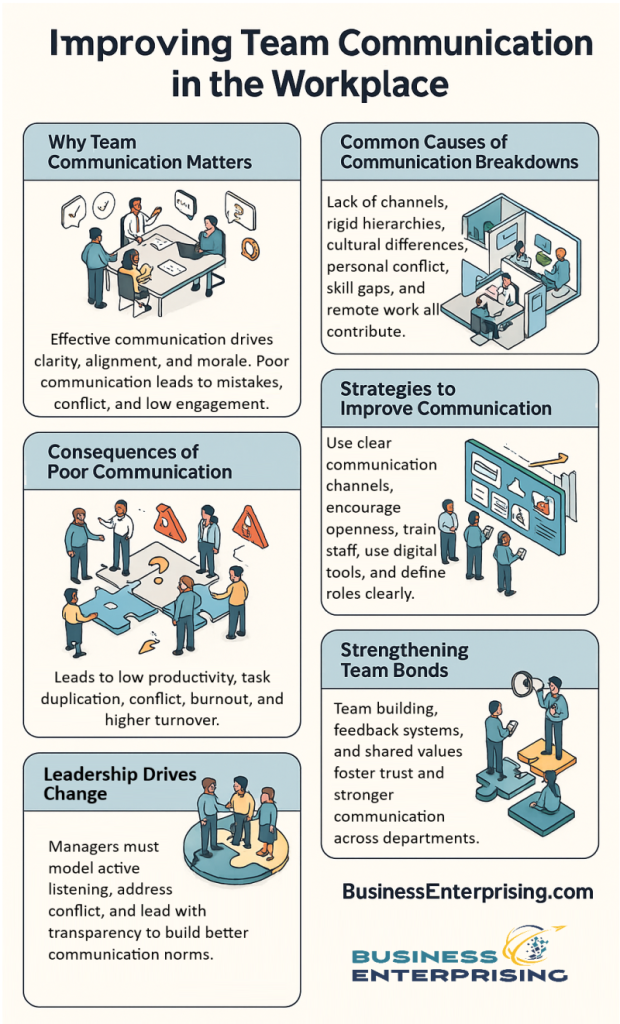
The Importance of Effective Team Communication
In any company, communication serves as the glue that holds teams together. It ensures that everyone is on the same page, working towards common goals, and aware of their roles and responsibilities. When communication is effective, it can lead to increased productivity, enhanced problem-solving, and a more positive work culture. Conversely, poor communication can create a host of problems, including misunderstandings, conflicts, and decreased employee engagement.
Causes of Poor Team Communication
Understanding the root causes of poor communication is the first step in addressing the issue. Several factors can contribute to communication breakdowns within teams. A lack of clear communication channels often leaves team members struggling to share information effectively. This can lead to important messages being missed or misunderstood. Cultural differences in diverse workplaces can impact communication styles. This can cause misinterpretations if team members are not aware of or sensitive to these differences.
In companies with rigid hierarchies, lower-level employees may feel intimidated or hesitant to communicate openly with management. This can stile feedback and inhibiting the flow of information. Personal conflicts between team members can also create communication barriers. This can lead to avoidance or negative interactions that affect the entire team. Furthermore, without proper training on communication skills, team members may not know how to convey their thoughts and ideas effectively. This can result in confusion and misinterpretation. The rise of remote work adds another layer of challenge, as virtual communication lacks the nuances of face-to-face interactions. This scenario makes misunderstandings more likely.
Consequences of Poor Team Communication
The impact of poor communication within a team can be far-reaching. When team members are not communicating effectively, tasks may be duplicated or overlooked. This often leads to wasted time and effort, significantly reducing overall productivity. Miscommunications can result in mistakes and errors, as team members may not have a clear understanding of their tasks. Poor communication can create a stressful work environment. This leads to decreased morale and job satisfaction, making team members feel undervalued or disconnected from their colleagues.
Misunderstandings and lack of clarity can lead to conflicts and tension within the team. This type of situation can escalate and become detrimental to the team’s cohesion and effectiveness. When employees are unhappy due to poor communication, they are more likely to leave the organization, leading to high turnover rates that can be costly and disruptive to the business.
Strategies for Improving Team Communication
Addressing poor communication requires a proactive approach and a commitment to fostering a culture of openness and collaboration. Creating and maintaining clear channels for communication within your team is crucial. Whether it’s through regular meetings, email updates, or collaboration tools, ensure that everyone knows how and where to communicate important information. Encouraging a culture of openness where team members feel comfortable sharing their ideas, feedback, and concerns can be achieved by creating a safe and inclusive environment where all voices are heard and respected.
Offering training sessions to help team members develop their communication skills can be beneficial. Topics such as active listening, effective presentation, and conflict resolution can enhance overall communication. Utilizing technology to facilitate better communication, especially for remote teams, is also important. Tools like video conferencing, instant messaging, and project management software can help bridge the communication gap and keep everyone connected.
Ensuring that roles, responsibilities, and expectations are clearly communicated to all team members can prevent misunderstandings and ensure that everyone knows what is expected of them. Investing in team-building activities can strengthen relationships and improve communication among team members, enhancing trust and collaboration within the team. Implementing a system for regular feedback where team members can share their thoughts and suggestions can help identify and address communication issues before they escalate.
Change Begins with Management
Encouraging team members to practice active listening, which involves fully concentrating, understanding, and responding thoughtfully to what others are saying, can significantly improve the quality of communication. Addressing conflicts promptly and constructively when they arise is essential to prevent them from negatively impacting team communication and morale. Finally, leaders should model effective communication practices. By demonstrating transparency, active listening, and open dialogue, leaders can set the tone for the rest of the team.
Conclusion
In conclusion, poor team communication is a pervasive issue that can hinder a team’s performance and overall success. By understanding the causes of communication breakdowns and implementing strategies to improve communication, companies can create a more cohesive and productive work environment. Establishing clear communication channels, promoting an open communication culture, providing training, leveraging technology, setting clear expectations, fostering team building, encouraging feedback, practicing active listening, addressing conflicts promptly, and leading by example are all essential steps in enhancing team communication.
Improving team communication within any organization requires ongoing effort and dedication, but the benefits are well worth it. A team that communicates effectively is more likely to be engaged, motivated, and aligned with the company’s goals. By prioritizing communication, organizations can unlock their team’s full potential and achieve greater success in today’s competitive business landscape.


